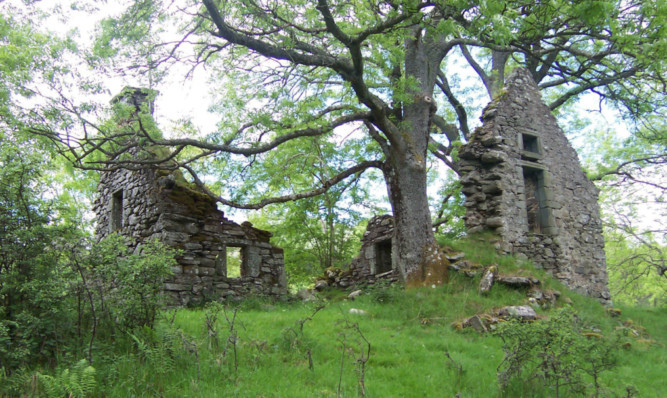A bid to build a house in the middle of a historic ruined village has been turned down for the second time after objections from around the world.
Walter and Janet Reid planned to build a one-and-a-half-storey building on an open area of land in Old Lawers village, on the banks of Loch Tay.
The village is deemed to be of national importance, with the two halves of the site classed as a Scheduled Ancient Monument.
The proposed house would have been placed on a grass infield between the two areas just 60 metres from the ruined village church, a B-listed building dating from 1669.
It would also have been in close proximity to the village graveyard. Objectors wrote from as far afield as Canada to protest at the “destruction” of the site.
Perth and Kinross Council threw out the plans at a meeting of the Local Review Body. The original application was refused last year.
One of those to object to the proposed development was Margaret McDiarmid. Writing from Toronto, the expat expressed her horror at the plans to disturb her ancestors’ resting place.
She said: “For the past 45 years I have visited yearly from Canada, spending time in the village and also the graveyard, where my parents and family are buried. I find it comforting and memorable to spend time in this sacred place. It is of great historic importance and the ruins should be unaltered and regarded with respect.”
Neil Hooper, of the Breadalbane Heritage Society, branded the bid “dangerous in the extreme”, saying that a new house would “detract” from the site.
Other protesters to the plans accused the couple of using an offer to preserve the ruins as a “bargaining tool in order to gain permission to build a house on a historically important site”.
Councillor Callum Gillies said the decision to refuse the appeal was “unanimous”.
He said: “It just wasn’t in keeping with the village that’s there. There was a huge amount of objections to it. We took these into account and made a balanced judgment on the day. It’s a historic area and it’s got to be preserved.”
Old Lawers lies on the northern shore of Loch Tay and acted as a ferry port for boats crossing the water. The modern settlement now lies to the west of the original, in line with the A827.
The southern section of the original village contains the church, the laird’s house and a third unidentified building. The rest of the village and the graveyard lie north of the open grassy area where Mr and Mrs Reid planned to build their property.
Photo courtesy of www.incallander.co.uk
